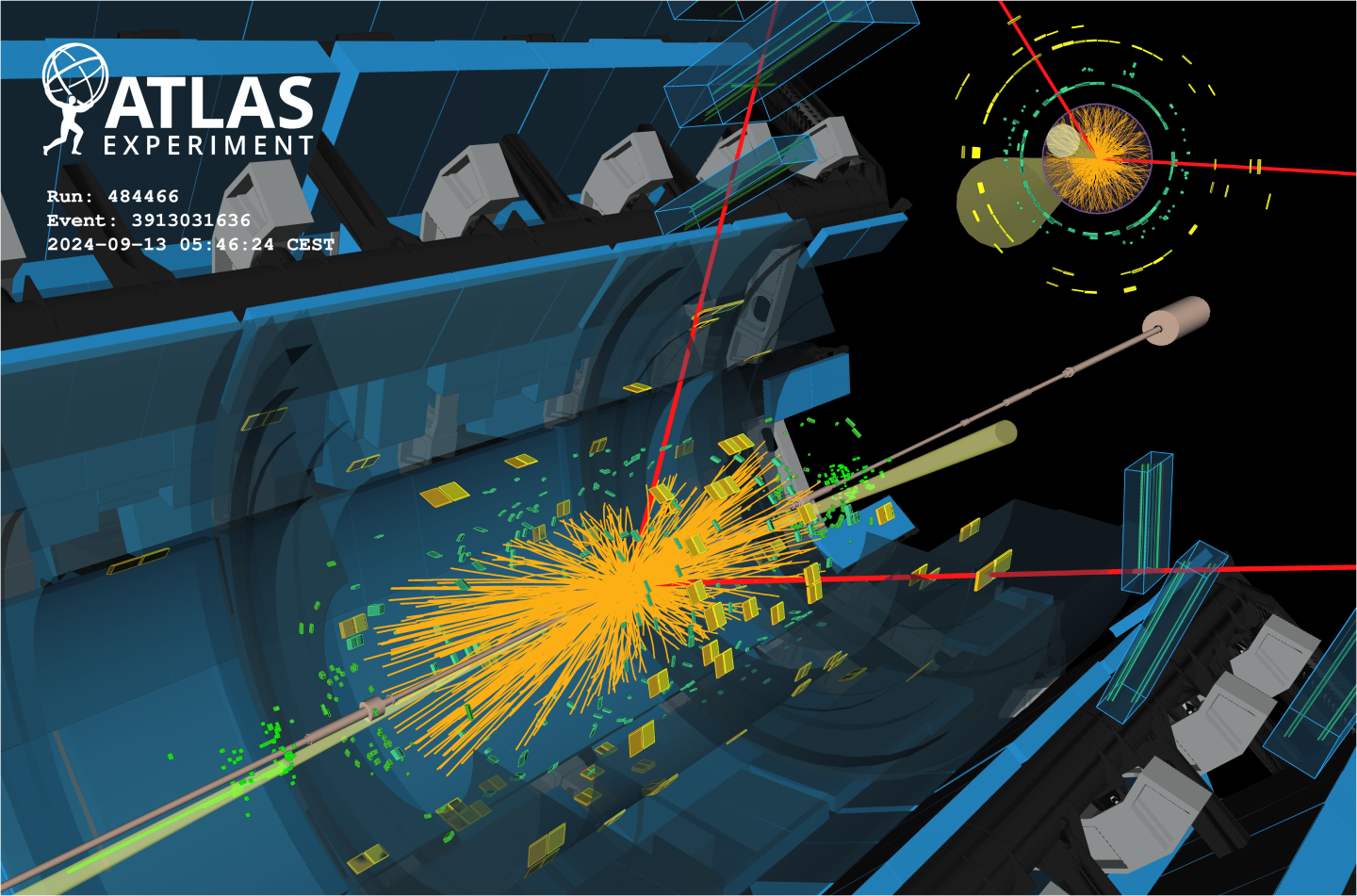
Event display of a candidate Higgs boson decaying to two muons (H→μμ), shown as red tracks in the detector. (Image: ATLAS/CERN)
Studies of the properties of the Higgs boson featured prominently in the programme of the major annual physics conference, the 2025 European Physical Society Conference on High Energy Physics (EPS-HEP), held this week in Marseille, France. Among the results presented by the ATLAS collaboration were two results narrowing in on two exceptionally rare Higgs-boson decays.
The first process under study was the Higgs-boson decay into a pair of muons (H→μμ). Despite its scarceness - occurring in just 1 out of every 5000 Higgs decays - this process provides the best opportunity to study the Higgs interaction with second-generation fermions and shed light on the origin of mass across different generations. Up to now, the interactions of the Higgs boson with matter particles have only been observed for particles from the third, heaviest, generation: the tau lepton and the top and bottom quarks.
The second process investigated was the Higgs-boson decay into a Z boson and a photon (H→Zγ), where the Z boson subsequently decays into electron or muon pairs. This rare decay is especially intriguing, as it proceeds via an intermediate "loop" of virtual particles. If new, unknown particles contribute to this loop, the process could offer hints of physics beyond the Standard Model.
Identifying these rare decays is quite the challenge. For H→μμ, researchers looked for a small excess of events clustering near a muon-pair mass of 125 GeV (the mass of the Higgs boson). This signal can be easily hidden behind the thousands of muon pairs produced through other processes ("background"). The H→Zγ decay with the Z decaying into electrons or muons is even harder to isolate, due to the Z boson only decaying this way only about 6% of the time and photons being easily mimicked by particle jets.

To boost the sensitivity of their searches, ATLAS physicists combined the first three years of LHC Run 3 data with the full LHC Run 2 data. They also developed a sophisticated method to better model background processes, categorised recorded events by the specific Higgs-production modes and made further improvements to their event-selection techniques.
In previous searches for H→μμ using the full Run 2 data set, the ATLAS collaboration saw its first hint of this process at the level of 2 standard deviations, while the CMS collaboration reached a significance of 3 standard deviations with 2.5 standard deviations expected. Now, with the combined Run 2 and Run 3 data sets, the ATLAS collaboration has found evidence for H→μμ with an expected significance of 2.5 standard deviations and an observed significance of 3.4 standard deviations. This means that the chance that the result is a statistical fluctuation is less than 1 in 3000!
As for the H→Zγ process, a previous ATLAS and CMS combined analysis used Run 2 data to find evidence of this decay mode. It reported an excess over the background-only hypothesis of 3.4 standard deviations with 1.6 standard deviations expected. The latest ATLAS result, combining Run 2 and Run 3 data, reported an excess of 2.5 standard deviations. The expected sensitivity of this analysis is 1.9 standard deviations, providing the most stringent expected sensitivity to date for measuring the decay probability ("branching fraction") of H→Zγ.
These achievements were made possible by the large, excellent data set provided by the LHC, the outstanding efficiency and performance of the ATLAS experiment and the use of novel analysis techniques. With more data on the horizon, the journey of exploration continues!






